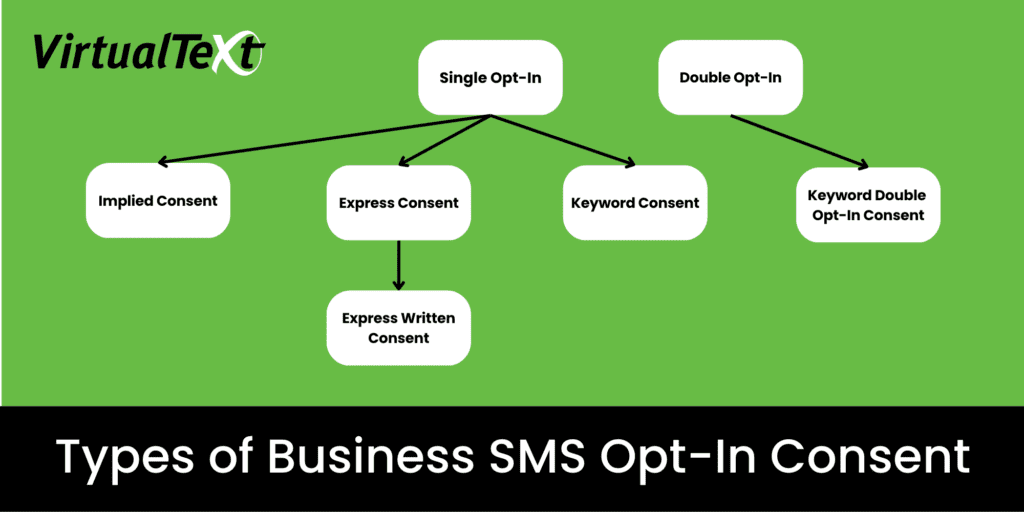Business text messaging is a highly effective means for companies to communicate with their customers. However, it’s important to use business SMS responsibly and follow best practices to avoid being flagged as spam or blocked by carriers. Failure to obtain texting consent can result in legal consequences, including fines and legal action. Therefore, it is important for businesses to ensure that they have obtained proper consent before sending SMS messages to consumers.
As the provider of VirtualText, we stay on top of all the legal requirements of TCPA. In this Texting Consent blog series, we aim to enhance your knowledge of texting objectives, opt-in methods, types of consent, and provide some best practices for business SMS.
Step 1: Creating A Texting Objective
Informational messages: Informational messages are conversational or transactional messages that provide useful information to customers, such as a welcome message, an order confirmation, or a shipping update.
Promotional messages: Promotional texts are messages that are designed to promote or advertise a product, service, or event. These texts usually contain a call-to-action, such as a discount code or a link to a website where the recipient can make a purchase.
Expert Tip: Before deciding on the appropriate consent required for your use case, it’s necessary to choose the type of SMS content that fits your objective. While both promotional and informational texts can be beneficial, it’s crucial to maintain a balance between them to ensure that your messages are captivating without being overly pushy.
Step 2: Choosing An Opt-In Method
Single Opt-In: In this method, the user only needs to take one action to opt-in, such as texting a keyword to a short code, filling out a form on a website, or by texting a business.
Double Opt-In: A double opt-in requires an additional step to confirm the opt-in, typically via a confirmation text that requires the customer to text “YES” to receive messages.
Expert Tip: While single opt-in may seem like the easier choice, it can lead to lower engagement rates and a higher likelihood of spam complaints. Double opt-in, while requiring more effort from the recipient, results in a more engaged and interested audience. Ultimately, the choice between single and double opt-in should be made based on your business goals and the preferences of your audience.

Step 3: Selecting A Texting Consent Opt-In Type
After gaining an understanding of texting objectives and opt-in methods, it’s now time to choose the appropriate type of texting consent required for your campaign. Utilizing the chart we have created, you can select one of the consent types below based on your business objectives:
Implied consent: If the consumer starts the text exchange and the business responds with relevant info.
Express consent: During a transaction, a customer opts-in to receive text messages about their order
Keyword consent: By texting a specific keyword to a business, a customer gives consent to receive text messages.
Express written consent: Consent can be provided by a customer through paper or electronic methods such as a website form, agreeing verbally in a recorded call, or selecting a dial pad key during an inbound call.
Keyword double opt-in consent: If texting consent had been granted previously, a customer can provide further consent to receive text messages by responding with “YES”.
Get TCPA Compliant With VirtualText
As businesses continue to rely on SMS messaging to reach customers, complying with TCPA regulations has become increasingly crucial. Fortunately, VirtualText provides an easy and effective solution for businesses looking to ensure TCPA compliance. VirtualText’s team of experts is available to provide guidance and support throughout the texting consent process, giving businesses peace of mind knowing that their SMS messaging is fully compliant. By choosing VirtualText for your business SMS needs, you’ll be able to focus on engaging with customers, while leaving the compliance complexities to the pros.











